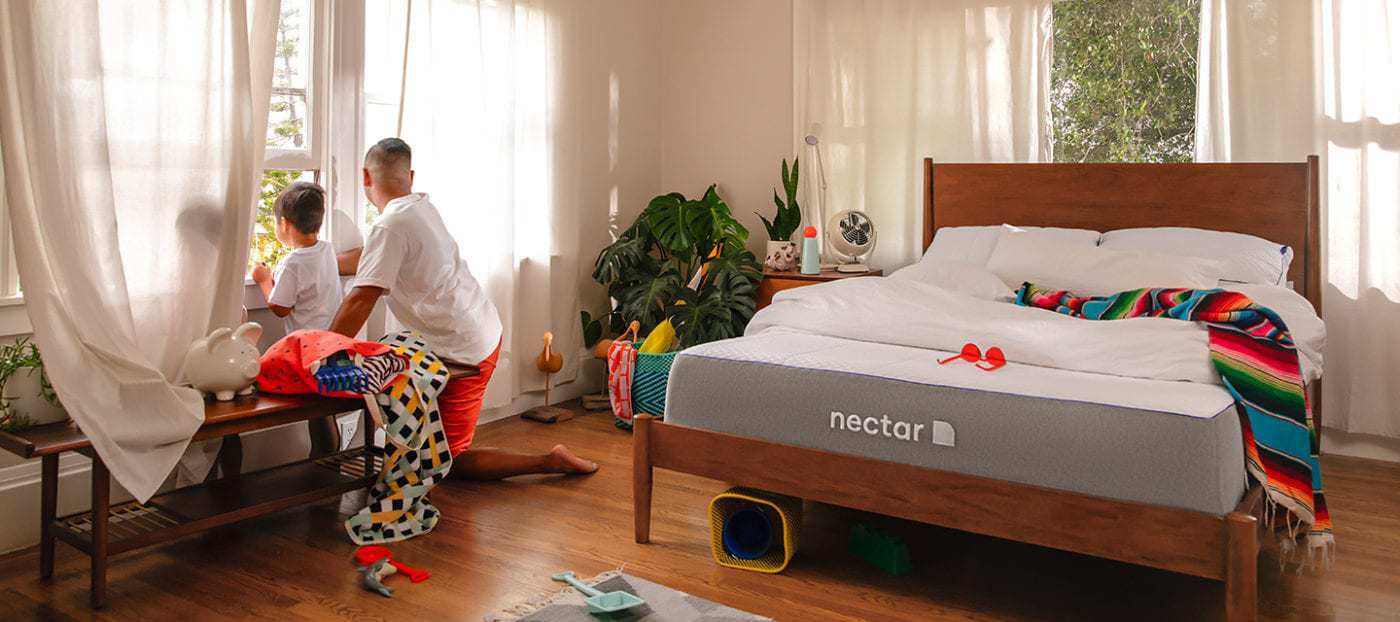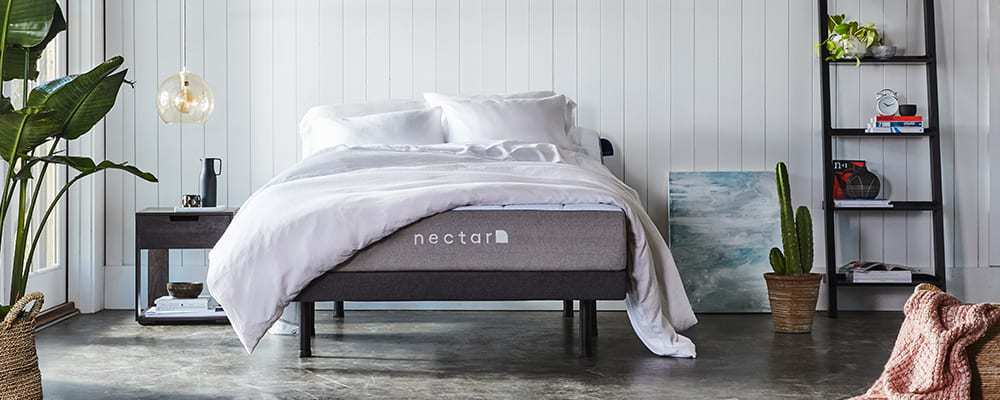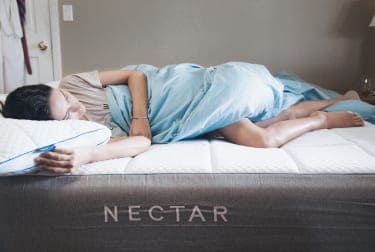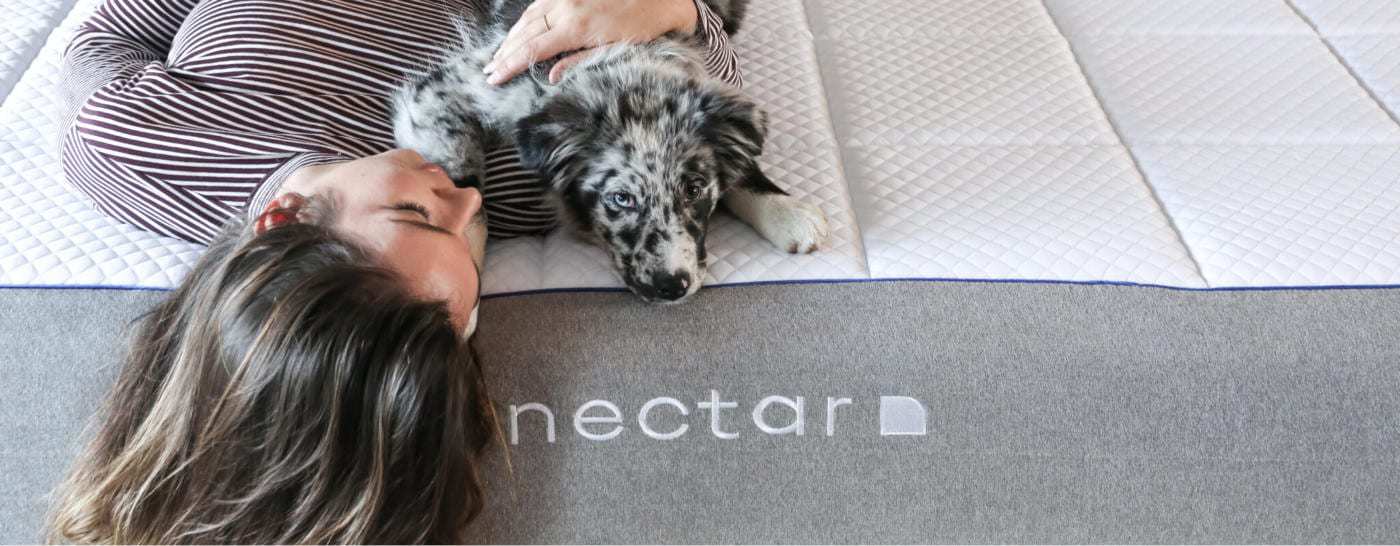Tired of sleeping on your old lumpy mattress?
Try Nectar, the most comfortable mattress, for 365 nights with the industry's longest risk-free sleep trial.

Sleep Cycle – Most species are classified as either nocturnal or diurnal. Simply put, nocturnality means being active during the night and asleep during the day. Nocturnal animals have physical characteristics that help them thrive and survive in the dark. This includes a heightened sense of smell and large eyes that can see clearly in low-light conditions. The opposite of this is diurnal — or being awake and active during day time, and asleep and inactive at nights.
Human beings, by nature, are diurnal creatures. The National Sleep Foundation says that the average adult needs around seven to nine hours of sleep every night. But more than the total number of hours spent sleeping, the quality of sleep is so much more important. During sleep, the body is supposed to complete multiple cycles of all the stages of sleep.
Human beings have built-in biological clocks that regulate our sleep and wake cycles and determine our sleep patterns — or the body’s circadian rhythm. The circadian rhythm is also influenced by environmental factors like sun and light exposure. It also regulates the release of hormones, hunger and digestion, and other bodily functions. When the circadian rhythm is disrupted, it could have negative effects on our health. Chronic sleep disruptions put you at risk for many health issues like depression, anxiety, obesity, diabetes, high blood pressure, and heart disease to name a few.
The circadian rhythm signals the body to produce melatonin. It is the hormone that is responsible for making us feel drowsy and primed for sleep. Once we do fall asleep, the body does not shut down, nor does the brain. This is unlike what was originally believed before scientific research revealed otherwise. Far from it, in fact. Instead, we enter a sleep cycle — it’s a whole new world for our brains.
It only looks like your brain and body are entering a passive stage when you fall asleep, but your brain actually shows incredible activity that can be classified into two parts, the Rapid Eye Movement sleep or REM sleep and the Non-REM sleep or NREM. On an average night of sleep, one can go through five or six cycles of NREM and REM phases of sleep.
Your sleep cycle is not the same as your circadian rhythm. While the circadian rhythm controls the overall sleeping and waking functions of the body, a sleep cycle is something your body enters into while asleep. On average, a single sleep cycle takes around 90 minutes. The average person will undergo multiple sleep cycles a night.
Try Nectar, the most comfortable mattress, for 365 nights with the industry's longest risk-free sleep trial.
This stage begins with feelings of drowsiness and progresses into a very light and very shallow sleep. This stage will last for about five, but up to 10 minutes in duration. The brain activity decreases. At this stage, a person will experience sleep starts or hypnic jerks; these are involuntary jerky movements that can mimic the sensation of falling, which usually ends up waking the sleeper.
The second stage of NREM lasts a little bit longer, up to nearly half an hour. This stage is still considered a light form of sleep, and a person in NREM can easily be roused. The body also undergoes some physical changes during this phase. The heart rate slows down, along with the breathing. The muscles start to relax, and brain waves also slow down. About half of the total number of hours a person spends asleep will be in the N2 Stage of sleep.
The third and fourth stage of the NREM sleep is also called slow wave, deep sleep, or delta, named after the slow brain wave that characterizes this stage. This sleep stage may last for less than an hour, but it is regenerative, and essential to waking up feeling refreshed and energized.
It is more difficult to rouse a person when they are in this stage of sleep. And when they do wake up, they wake up disoriented. (A tip for those who want to take a quick power nap, keep it under 30 minutes, so you don’t wake up feeling groggy.)
At this stage of sleep, some sleep talking and sleepwalking can occur, as well as vivid dreaming. On average, 15 percent of one’s total sleep time is spent in this stage.
REM (rapid eye movement) sleep starts about 90 minutes after you fall asleep and each REM stage can last for up to an hour. This phase is marked by the swift left to right, up and down movements of the eyes behind your closed eyelids; hence the name. There is no definitive scientific explanation for this, but one theory is that it is linked to dreaming and brain wave activity because this deep sleep stage is also characterized by increased brain activity. This is the stage where a sleeping person may have dreams or night terrors. Physically, your body will undergo some changes as well. Your breathing will become fast and irregular; your heart rate and your blood pressure will spike up as well. Meanwhile, your body temperature drops and your muscles relax to the point of immobilization.

There are many different factors that can cause sleep to be elusive. Some are lifestyle based and temporary, while others may have rather serious underlying health issues that could be the root cause.
An example of short-term sleep disorder is jet lag. It’s the disruption of our biological clock that happens when we cross time zones. This is a condition that can resolve itself in a few days even without intervention; however, if you are a frequent traveler, you may want to consult your doctor.
On the other hand, some examples of the more serious sleep disorders include insomnia caused by depression and anxiety, sleep apnea, and narcolepsy. If you are suffering from insomnia, or if you find yourself waking up in the middle of the night to go to the bathroom, your sleep deprivation or sleep interruptions might have a physiological cause and will need treatment. It is important to schedule a visit with your primary doctor or sleep specialist regarding your sleep pattern.
The Nectar forever warranty ensures you're covered for life as long as you own the mattress.
Unfortunately, sleep does not come easily to everybody. For a wide variety of reasons, many people end up tossing and turning each night, unable to get a good night’s rest. We all must do what we can to help our body recalibrate and get back to a proper sleep schedule. This could include a number of lifestyle practices, changes, and additions such as limiting screen time, investing in a good mattress and pillows, installing blackout drapes, using a sleep cycle calculator, or maybe even seeing a trained specialist that can prescribe appropriate medication or therapies.
Not only is tobacco and nicotine (in any form) very problematic for your health and the environment, but research also shows that smokers have a low rate of REM sleep. Meaning, they’re not getting the maximum restorative benefits of sleep in the N3 stage.
You might think that alcohol will knock you right out and give you a good night’s sleep, but in reality, you might fall asleep, but an alcohol-induced slumber will keep you in the lighter stages of sleep, and you will not wake up well-rested.
Another example is consuming too much caffeine, especially too close to your bedtime. The effects of caffeine on sleep patterns include the inability to fall asleep and alertness even in the wee hours of the night. That last part might not sound too bad, especially if you are trying to catch up on work, but habitual sleep deprivation can have harmful effects on your overall health.
A set bedtime and waking up time is good for the body because it craves routine. Try your best to stick to a schedule of sleeping at nights and being awake during the day time.
Some drugs, especially prescription antidepressants, tend to interfere with your body’s natural sleeping patterns. It can either keep you from falling asleep or make you feel unnaturally sleepy most of the time. If you find it disruptive, speak to your doctor about alternative options.
To sum it all up, the sleep cycle is a rich and important subject of scientific research. It is an essential part of maintaining optimal health and optimal brain function. Sleep is not just for the lazy who love a good foam mattress, and absolutely nobody should feel guilty for prioritizing sleep. Having healthy sleeping habits are an integral and inextricable part of having a healthy lifestyle, and should not be taken for granted. Also, remember that eating healthy food and exercising regularly can also help get your sleep patterns on track.
You might be a fragile sleeper, a night owl or a log sawer and each of these have a completely different sleep pattern. To know more about your sleeping pattern, visit Nectarsleep.
A full sleep cycle takes anywhere from 90 to 120 minutes. However, it is important to note that our bodies go through several of these cycles during our sleep. For this reason, it’s recommended that adults sleep 8-1o hours. Meanwhile, kids need 9-12 hours a night and infants even more than that to promote healthy growth.
Almost a third of adults have reported that they’re sleeping poorly. The most common disorders include:
Insomnia: Difficulty falling asleep or staying asleep even if someone feels they are tired. People with this condition are often dissatisfied with their sleep and can suffer from symptoms like fatigue and an inability to focus leading to poor performance the next day.
Sleep apnea: A disorder in which breathing is interrupted while sleeping. There are two causes: either a person’s airway is blocked or the muscles responsible for breathing aren’t getting the right signals from the brain. In either case, this stress on the body can cause high blood pressure, heart attack and even stroke.
Restless leg syndrome (RLS): This is a disorder in the central nervous system which can give people an itching or prickling feeling in their legs, often while laying in bed. This can cause people to feel a strong urge to move their legs to relieve these sensations. The nightly discomfort can lead to sleep deprivation.
REM behavior disorder (RBD): In the REM stage of sleep your mind is very active while your body is temporarily paralyzed to prevent your body from physically moving in response to dreams. In contrast, people with RBD retain the ability to physically move their bodies in response to what is happening in their dreams, which can lead to serious injuries.
Narcolepsy: People with this chronic sleep disorder can find themselves feeling excessively drowsy throughout the day, even falling asleep suddenly. These episodes of sleep are often brief, a few seconds or minutes, but can be disorienting as people are unable to remember what just happened.
Sleepwalking: This is a disorder more common in children although it can occur in adults where a person gets up and walks around while in a state of sleep. It is more likely to occur if someone is sleep deprived.
Sleep terrors: Someone suffering from this disorder might react to a sense of fear while sleeping and react by screaming or thrashing about in their sleep. Someone in the middle of a sleep terror can be difficult to wake up. When they do wake up, they may feel disoriented, be covered in sweat, or feel their heart racing.
Teeth grinding: Grinding or clenching one’s jaw during sleep can be a physical manifestation of feeling stressed or anxious. If left untreated, it can lead to the wear down and damaging of teeth, headaches and jaw pain.
Accordion CThere are plenty of sneaky ways that our sleep can be disturbed. Common reasons are having to get up to use the bathroom, drinking alcohol within four hours of going to bed, heartburn from dinner, pain from arthritis, having caffeine too late in the day, or stress. It can also be your room: use blackout curtains to ensure an optimal sleep environment, keep the temperature slightly cool around 65 degrees, abstain from blue-light exposure in electronics right before bed and make sure that your mattress isn’t pushing against your pressure points or letting you sink in too deeply.ontent
Kleine-Levin Syndrome known as KLS or “sleeping beauty syndrome” is a rare sleep disorder. It is characterized by recurrent periods of excessive sleeping followed by behavioral and cognitive problems during waking hours. While the causes of KLS are unknown, it primarily strikes during teenage years with episodes ceasing with the onset of adulthood.
The top sleep disorders fall under the category of insomnia. Symptoms include difficulty falling asleep, staying asleep, waking up and not being able to fall back asleep, or waking up earlier than a person would like. While many people accept these conditions as something inevitable, the risk of doing so is high: studies have shown that people with insomnia can be prone to depression, have a lowered ability to focus and may be prone to accidents.
It’s awful to feel exhausted and lay in bed trying to sleep without success. In fact, the more you try the more difficult it can be to fall asleep. Many people with insomnia describe their condition as being chronically tired, but unable to sleep. In such cases, even if you feel that you aren’t particularly sleepy, you can encourage sleep by making sure your room provides a great sleeping environment.
There are many ways to try falling asleep fast. Some people have success by limiting their exposure to light before bed, meditating before sleep, listening to binaural beats, or taking a warm bath before bed. A good mattress can also support you in various ways by keeping you cool and providing the right amount of support. It’s also important to have cool and comfortable sheets as well as pillows that support your sleeping style.
If you have trouble sleeping, try developing a bedtime routine that you consistently keep each night. This could include doing something relaxing before bed like reading or writing in a journal. Just remember that the point is to avoid over-stimulating activities like watching action movies or checking emails on your phone.
If you’re bored in bed, it might be a good thing. Being calm and relaxed signals to your body that you’re ready to wind down. Just be sure not to overthink being bored which can stress you out and prevent sleep. Balance is key here: avoid electronics and try reading a book or making a list of things you want to accomplish the next day. This can help relieve your mind from worrying about the next day’s to-dos.
Try Nectar risk free for a full year

We all hear that sleep is important, but we rarely stop to think about what exactly happens when we lay down at night (or during the day). While it may look like we’re doing nothing when we’re in this state of rest, our brains and bodies are actually quite busy doing internal housekeeping. In fact, sleep affects everything from our mood to immune system and even our ability to create and store memories. While everyone’s sleep rhythm is unique and sleep patterns change throughout our lives, a good night’s rest is key to everyone for optimal health. Far from being outside of our control, there are actually plenty of things we can all do to give ourselves a higher chance of sleeping well.
Sleep actually occurs in cycles that last anywhere from 90 to 120 minutes. During this time we move through five stages of sleep. Non-rapid eye movement (NREM) sleep composes the first four stages which move us from a light sleep to a very deep one. The fifth and last stage, where most dreaming occurs, is called rapid eye movement (REM) sleep. During REM, our eyes begin to move quickly from side to side behind closed eyelids.
It’s typical for someone to enter the REM stage of sleep about 90 minutes after first falling asleep and going through the first four stages of NREM. The REM cycle usually lasts about ten minutes and will get progressively longer throughout the night. The length of the REM stage will also vary throughout our lifetimes: infants spend about 8o percent of their total sleep in this stage while adults spend 20 to 25 percent. The amount of time spent in the REM stage will then drop in people in their 60s.
At this stage, there are even signals that appear to be random. It is believed that the brain’s cortex attempts to interpret and find meaning in these “random” signals thereby creating a story and a basis for our dreams. For the curious: observing rapid eye movement in other species can point to whether they can dream. This means that mammals, reptiles and some birds actually dream and explains why some dog owners observe their pets barking or pawing at something in their sleep.
Dreaming has fascinated people since the beginning of time. If you’ve ever thought, “I don’t dream when I sleep,” you’ll be surprised to learn that everyone does. Besides being super interesting, dreams can also reveal a lot about your sleep cycles. Since REM sleep and the ability to recall dreams are closely related, it means that the longer your REM cycle, the more intense your dreams will be.

Dreaming has fascinated people since the beginning of time. If you’ve ever thought, “I don’t dream when I sleep,” you’ll be surprised to learn that everyone does. Besides being super interesting, dreams can also reveal a lot about your sleep cycles. Since REM sleep and the ability to recall dreams are closely related, it means that the longer your REM cycle, the more intense your dreams will be.
Human growth hormone, or HGH, is key contributor in helping kids grow. It’s absolutely crucial for building healthy bones, muscles and nerves. While HGH is released in small amount through the day, it’s released in its highest amounts during deep sleep. This means that a person’s growth can be impacted over the long-term if they don’t get a sufficient amount of rest each night. And, it’s not only kids that can be affected: hormones for adults that regulate weight are also released while the body is in rest mode.
The effect of sleep on the brain has been widely researched and cannot be stressed enough. Important brain functions can only occur while the body is sleeping and cannot be replicated while the body is awake. Sleep allows the brain to edit memories acquired from the previous day and to restore itself for the day ahead. Even one night of bad sleep can negatively impact a person’s ability to function to their full capacity at home, school, or in their community.


A full sleep cycle takes anywhere from 90 to 120 minutes. However, it is important to note that our bodies go through several of these cycles during our sleep. For this reason, it’s recommended that adults sleep 8-1o hours. Meanwhile, kids need 9-12 hours a night and infants even more than that to promote healthy growth.
Almost a third of adults have reported that they’re sleeping poorly. The most common disorders include:
Insomnia: Difficulty falling asleep or staying asleep even if someone feels they are tired. People with this condition are often dissatisfied with their sleep and can suffer from symptoms like fatigue and an inability to focus leading to poor performance the next day.
Sleep apnea: A disorder in which breathing is interrupted while sleeping. There are two causes: either a person’s airway is blocked or the muscles responsible for breathing aren’t getting the right signals from the brain. In either case, this stress on the body can cause high blood pressure, heart attack and even stroke.
Restless leg syndrome (RLS): This is a disorder in the central nervous system which can give people an itching or prickling feeling in their legs, often while laying in bed. This can cause people to feel a strong urge to move their legs to relieve these sensations. The nightly discomfort can lead to sleep deprivation.
REM behavior disorder (RBD): In the REM stage of sleep your mind is very active while your body is temporarily paralyzed to prevent your body from physically moving in response to dreams. In contrast, people with RBD retain the ability to physically move their bodies in response to what is happening in their dreams, which can lead to serious injuries.
Narcolepsy: People with this chronic sleep disorder can find themselves feeling excessively drowsy throughout the day, even falling asleep suddenly. These episodes of sleep are often brief, a few seconds or minutes, but can be disorienting as people are unable to remember what just happened.
Sleepwalking: This is a disorder more common in children although it can occur in adults where a person gets up and walks around while in a state of sleep. It is more likely to occur if someone is sleep deprived.
Sleep terrors: Someone suffering from this disorder might react to a sense of fear while sleeping and react by screaming or thrashing about in their sleep. Someone in the middle of a sleep terror can be difficult to wake up. When they do wake up, they may feel disoriented, be covered in sweat, or feel their heart racing.
Teeth grinding: Grinding or clenching one’s jaw during sleep can be a physical manifestation of feeling stressed or anxious. If left untreated, it can lead to the wear down and damaging of teeth, headaches and jaw pain.
There are plenty of sneaky ways that our sleep can be disturbed. Common reasons are having to get up to use the bathroom, drinking alcohol within four hours of going to bed, heartburn from dinner, pain from arthritis, having caffeine too late in the day, or stress. It can also be your room: use blackout curtains to ensure an optimal sleep environment, keep the temperature slightly cool around 65 degrees, abstain from blue-light exposure in electronics right before bed and make sure that your mattress isn’t pushing against your pressure points or letting you sink in too deeply.
Kleine-Levin Syndrome known as KLS or “sleeping beauty syndrome” is a rare sleep disorder. It is characterized by recurrent periods of excessive sleeping followed by behavioral and cognitive problems during waking hours. While the causes of KLS are unknown, it primarily strikes during teenage years with episodes ceasing with the onset of adulthood.
The top sleep disorders fall under the category of insomnia. Symptoms include difficulty falling asleep, staying asleep, waking up and not being able to fall back asleep, or waking up earlier than a person would like. While many people accept these conditions as something inevitable, the risk of doing so is high: studies have shown that people with insomnia can be prone to depression, have a lowered ability to focus and may be prone to accidents.
It’s awful to feel exhausted and lay in bed trying to sleep without success. In fact, the more you try the more difficult it can be to fall asleep. Many people with insomnia describe their condition as being chronically tired, but unable to sleep. In such cases, even if you feel that you aren’t particularly sleepy, you can encourage sleep by making sure your room provides a great sleeping environment.
There are many ways to try falling asleep fast. Some people have success by limiting their exposure to light before bed, meditating before sleep, listening to binaural beats, or taking a warm bath before bed. A good mattress can also support you in various ways by keeping you cool and providing the right amount of support. It’s also important to have cool and comfortable sheets as well as pillows that support your sleeping style.
If you have trouble sleeping, try developing a bedtime routine that you consistently keep each night. This could include doing something relaxing before bed like reading or writing in a journal. Just remember that the point is to avoid over-stimulating activities like watching action movies or checking emails on your phone.
If you’re bored in bed, it might be a good thing. Being calm and relaxed signals to your body that you’re ready to wind down. Just be sure not to overthink being bored which can stress you out and prevent sleep. Balance is key here: avoid electronics and try reading a book or making a list of things you want to accomplish the next day. This can help relieve your mind from worrying about the next day’s to-dos.